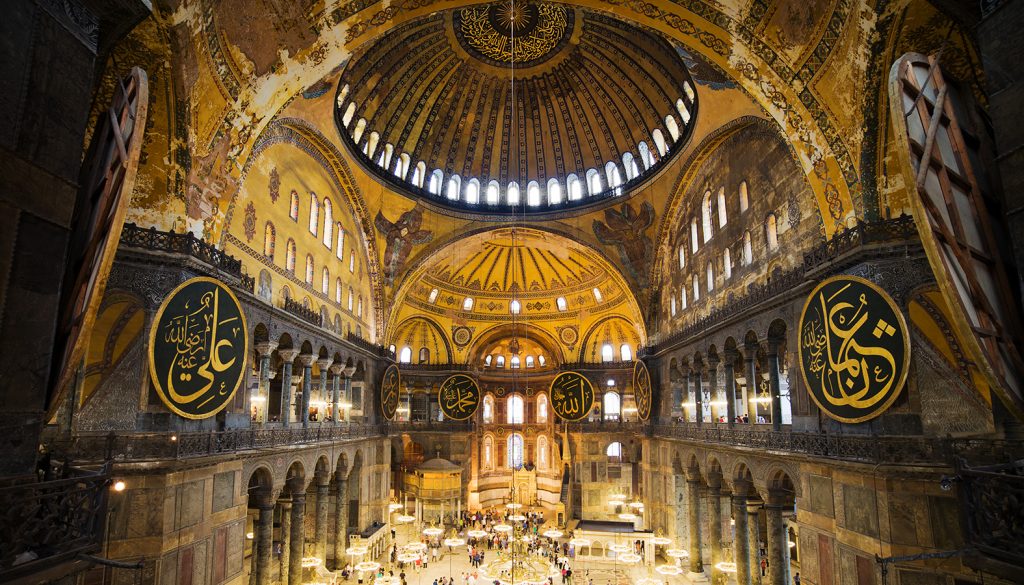A Turkish court paved the way Friday for the former Byzantine cathedral of Hagia Sophia in Istanbul to be turned back into a mosque.
Turkey’s highest administrative court ruled July 2 to revoke the 80-year-old decree that declared the sixth-century building a museum. The ruling was announced July 10.
Turkey’s President Recep Tayyip Erdoğan is expected to make the final decision on whether Hagia Sophia will revert to a mosque -- a cause he has loudly championed.
Christian leaders in the Middle East and Europe have spoken out in favor of maintaining the status quo at the historic site.
Eastern Orthodox Ecumenical Patriarch Bartholomew of Constantinople said Turkish people have the responsibility "to make the universality of this wonderful monument shine," given that as a museum it is “the symbolic place of encounter, dialogue, solidarity and mutual understanding between Christianity and Islam.”
Patriarch Bartholomew addressed the place of Hagia Sophia in his homily during Divine Liturgy at the Church of the Holy Apostles in Istanbul June 30, Fides news agency reports.
Hagia Sophia belongs “belongs not only to those who own it at the moment, but to all humanity,” he said.
The Eastern Orthodox Christian leader warned that converting it to a mosque “will push millions of Christians around the world against Islam.”
“A threat against Hagia Sophia is a threat to all of Christian civilization, meaning our spirituality and history,” Patriarch Kirill of Moscow said July 6. He said the former basilica of Constantinople is “one of the biggest monuments of Christian civilization.”
“What could happen to Hagia Sophia will cause deep pain among the Russian people,” said the Russian Orthodox patriarch.
U.S. leaders have also objected.
“The Hagia Sophia holds enormous spiritual and cultural significance to billions of believers of different faiths around the world,” U.S. Ambassador At Large for Religious Freedom Sam Brownback said on Twitter June 25.
“We call on the government of Turkey to maintain it as a UNESCO World Heritage site and to maintain accessibility to all in its current status as a museum.”
Hagia Sophia, which means “Holy Wisdom,” was built in 537 under the Byzantine Emperor Justinian. For a time it was the largest building in the world and the largest Christian church. It served as the cathedral of the Patriarch of Constantinople before and after the Great Schism split Western and Eastern Christianity into Catholic and Eastern Orthodox Churches.
After the Ottoman capture of Constantinople in 1453, the cathedral was converted into a mosque. Under the Ottomans, architects added minarets and buttresses to preserve the building, but the mosaics showing Christian imagery were whitewashed and covered.
In 1934, under a secularist Turkish government, the mosque was turned into a museum. Some mosaics were uncovered, including depictions of Christ, the Virgin Mary, John the Baptist, Justinian I, and the Byzantine Empress Zoë Porphyrogenita.
It was declared a World Heritage Site under UNESCO, the United Nations Educational, Scientific and Cultural Organization. When the museum becomes a mosque, it is believed that the mosaics will have to be covered during Muslim prayers, as well as the seraph figures located in the high basilica dome.
Turkey’s population of 82 million is overwhelmingly Sunni Muslim. Non-Muslim minorities make up only 0.2%, and the Christian population is split among several Orthodox and Catholic Churches, as well as other groups.

